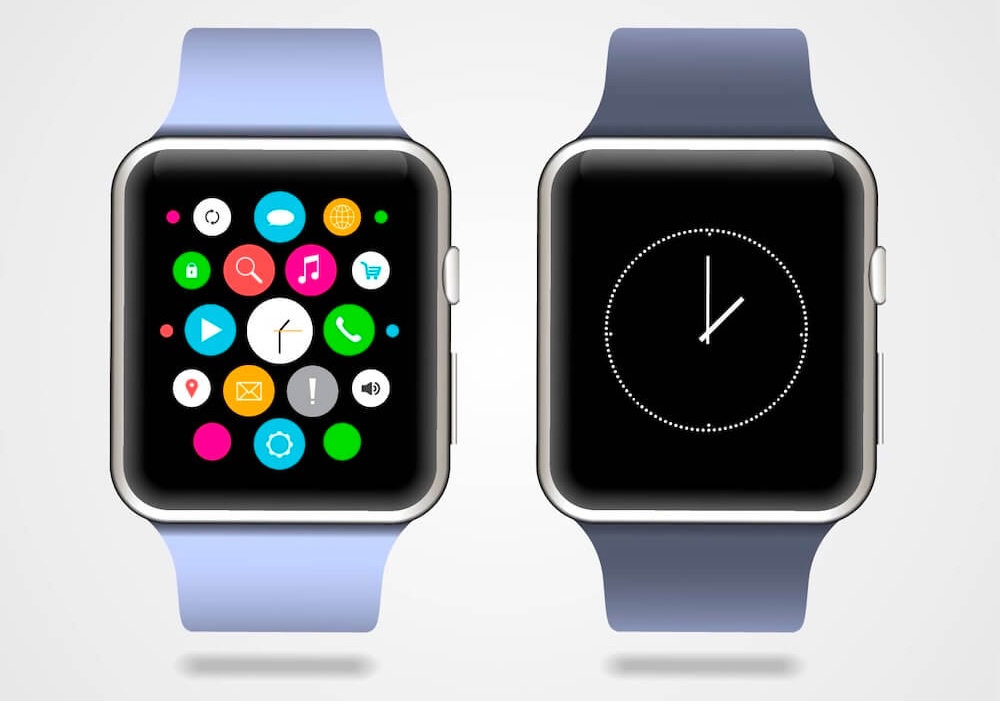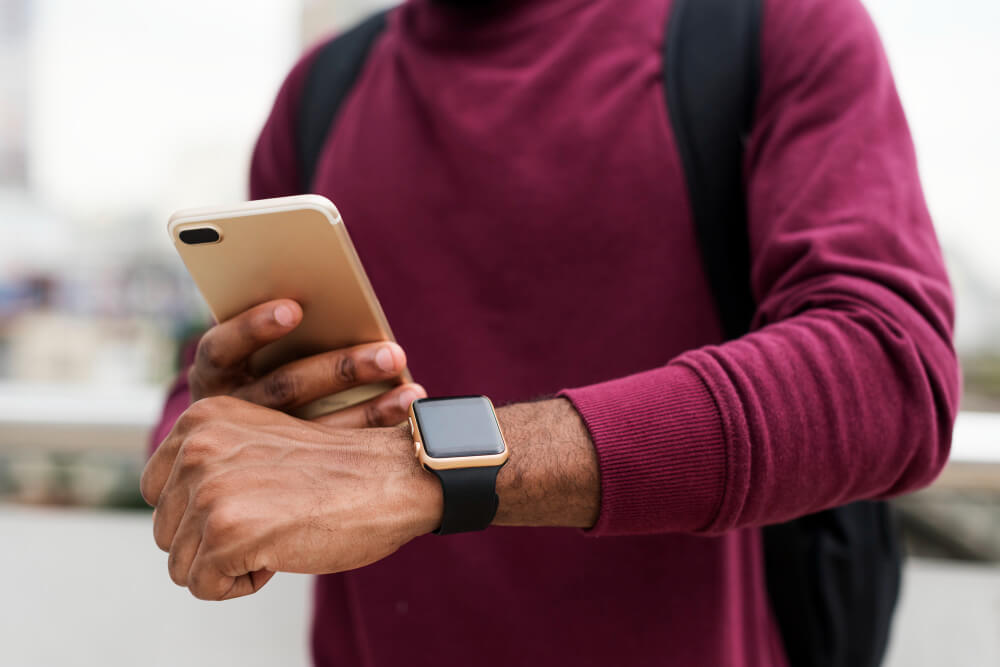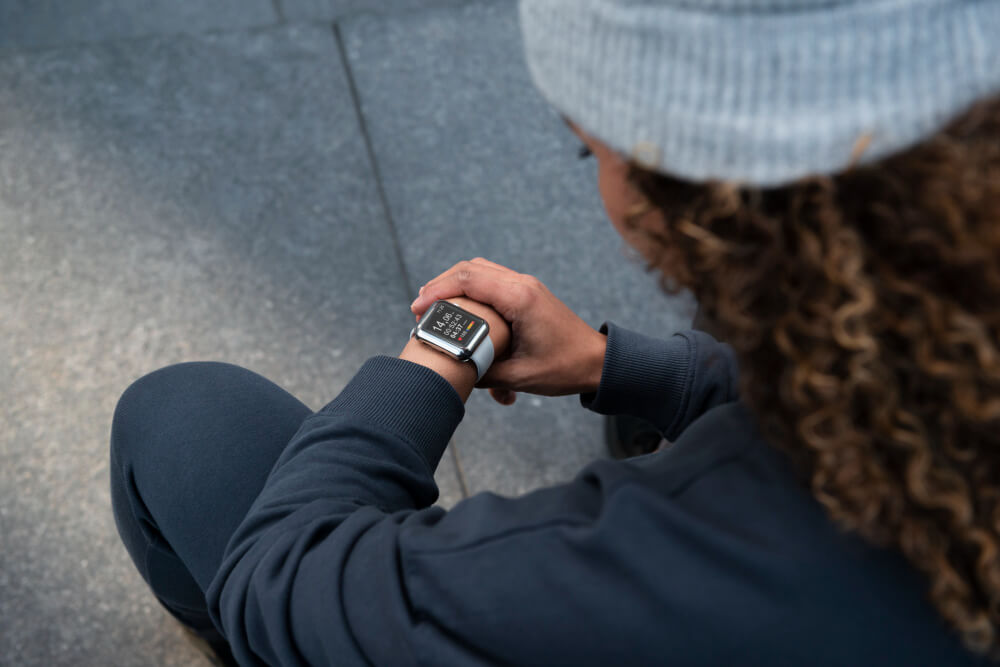Since its global debut in 2015, the Apple Watch has revolutionised the wearable technology market— becoming a staple for tech enthusiasts and fitness buffs alike. Its seamless integration with the iPhone, health and fitness tracking capabilities, and sleek design make it a sought-after gadget for tech enthusiasts.
But like any other electronic device, it has a limited lifespan. If you’re continually using it to track workouts, monitor your health, or stay connected—knowing its lifespan and how to maintain it can help you maximise your investment.
This informative blog seeks to explore how long an Apple Watch typically lasts, factors that affect its longevity, and tips for maintaining it. So, without further ado, let’s get started!
Typical lifespan of Apple watches
As devices age, they usually negatively impact the overall user experience. Furthermore, a model that is no longer receiving software updates may become unresponsive to newer programs and features. Thereby, prompting users to think about upgrading earlier than they had planned.
Knowing a device’s anticipated lifespan can help consumers make well-informed selections and ensure a good return on their investment. Furthermore, knowing how long an Apple Watch will last can help users proactively apply maintenance best practices that will increase the device’s usable life.
General lifespan expectations
The typical lifespan of an Apple Watch varies depending on the model and how it’s used. On average, most Apple Watches last between three and five years before they start showing signs of significant wear or performance decline.
Here’s a breakdown of the expected lifespan across popular models:
- Apple Watch Series 3: This model was launched in 2017 and can still run the latest watchOS updates, but its processing power is starting to lag behind newer models. You can expect it to last up to four to five years before performance issues become noticeable.
- Apple Watch SE: Introduced in 2020, the SE is considered a mid-range option, combining features from earlier high-end models. With its modern internals, it can last around five years or more.
- Apple Watch Series 6, 7, 8, 9, and 10: These models are newer and more powerful, thanks to advanced sensors and processing capabilities. You can expect these to last at least five to six years with proper care.
- Apple Watch Ultra and Ultra 2: Built as a rugged, durable option for athletes and adventurers, the Ultra is designed to be more robust. Its lifespan is expected to stretch beyond the typical five to six years due to its premium build quality and advanced features.
It’s worth noting that these are general estimates, and individual experiences may vary depending on usage patterns and care. One crucial factor that impacts the longevity of Apple Watches is software updates.
Apple typically provides software support for its watches for about 4-5 years after their release. Once a model stops receiving updates, it may still function but will gradually become obsolete as it misses out on new features and security patches.
Battery life and replacement
Battery life is a critical component of an Apple Watch’s overall lifespan. On average, one can expect:
- Daily battery life: 18-24 hours (depending on usage)
- Battery lifespan: 2-3 years before noticeable degradation
As one’s Apple Watch battery ages, one might notice:
- Shorter daily battery life
- Unexpected shutdowns
- Longer charging times
When your Apple Watch battery health drops below 80%, it’s usually time to consider a replacement. Apple offers battery replacement services, which can significantly extend the life of your device.
Factors affecting longevity
Several factors determine the length of time your Apple Watch will last. Understanding these factors can help you maximise your device’s lifespan.
Usage patterns
The way you use your Apple Watch has a significant impact on its longevity. Heavy users—who rely on it for constant fitness tracking, notifications, and app usage— will see faster wear and tear compared to light users, who primarily use it as a timepiece and for occasional fitness tracking.
- Heavy usage: If you regularly use your watch for GPS tracking during workouts, heart rate monitoring, and running multiple apps, the battery will drain faster. This puts more strain on the internal components, which can shorten the overall lifespan.
- Light usage: Users who only use basic functions such as checking notifications and time will experience slower device degradation. The life of your watch can be greatly increased by minimising features that are not necessary and by controlling which apps run in the background.
Environmental factors
Environmental conditions can considerably impact the longevity of your Apple Watch. Here are some key factors to consider:
- Temperature: Extreme temperatures— both hot and cold—may negatively affect battery performance and potentially damage internal components. Apple recommends using the watch in temperatures between 32° to 95° F (0° to 35° C).
- Humidity: High humidity may lead to moisture accumulation inside the watch, potentially causing corrosion of internal components. While Apple Watches are water resistant, prolonged exposure to high humidity can still be detrimental.
- Sun exposure: Over time, direct, prolonged sunlight can cause overheating and screen damage. UV radiation can also degrade the materials of the watchband.
- Altitude: At very high altitudes, the reduced air pressure can potentially affect the watch’s performance and battery life.
- Dust and particles: Regular exposure to dusty environments can lead to buildup in ports and buttons, affecting functionality over time.
To maximise your Apple Watch’s lifespan, it’s best to avoid exposing it to these extreme conditions whenever possible.
Wear and tear
Like any wearable device, your Apple Watch is susceptible to regular wear and tear. The casing and screen can suffer scratches, dents, or even cracks if not properly protected.
- Scratches and scuffs: Daily wear can cause small scratches on the watch’s screen or body—especially if worn during sports or outdoor activities. To minimise this, use a screen protector or protective case.
- Screen damage: Drops or impacts can cause screen damage, which may not only be cosmetic but also functional. In cases of severe damage, you may need to consider a costly repair or replacement.
Maintenance tips for prolonging life
Maintaining your Apple Watch properly can significantly extend its lifespan. Here are some key tips to keep your device running smoothly for years.
Regular software updates
One of the simplest ways to keep your Apple Watch in top shape is by regularly updating its software. Each new version of watchOS not only brings new features but also fixes security vulnerabilities and optimises performance.
Keeping your Apple Watch updated ensures you’re benefiting from the latest features while maintaining security and functionality. However, make sure that your watch has enough storage space and battery life before attempting an update.
Battery care
Proper battery care is essential for maximising the lifespan of your Apple Watch. Here are some best practices:
- Avoid extreme charge levels: Try to keep your battery level between 20% and 80%. Consistently charging it to 100% or letting it drain to 0% can stress the battery over time.
- Use optimised battery charging: Enable this feature in your watch settings. It learns your daily charging habits and delays charging past 80% until you need to use it, reducing battery ageing.
- Avoid heat exposure during charging: Heat can degrade battery capacity. Don’t charge your watch in direct sunlight or under pillows.
- Use the original charger: Third-party chargers may not regulate power as effectively, potentially damaging the battery.
- Update your software: As mentioned earlier, software updates often include battery optimisations.
- Reduce always-on display usage: If your model supports it, consider turning off the always-on display to conserve battery life.
- Minimise background app refresh: Limit this feature to essential apps to reduce unnecessary battery drain.
Cleaning and care
Cleaning your Apple Watch regularly can prevent grime and dirt from building up, which can affect its performance and longevity.
- Watch Body: If necessary, wipe the watch body with a lint-free cloth and a little fresh water. Dry it thoroughly afterwards.
- Bands: Depending on the material of your band, clean it accordingly. Silicone bands can be cleaned with water and soap, while leather bands require gentler care to avoid damage.
Avoiding physical damage
Your Apple Watch is prone to physical damage, especially if you’re active or use it frequently outdoors. Here are a few tips to help prevent damage:
- Use a screen protector: This small investment can help you avoid the frustration of screen scratches or, worse, a cracked display.
- Choose a protective case: A slim case can protect the watch’s body from dents and scratches without adding too much bulk.
- Be mindful of water: While the Apple Watch is water-resistant, it’s not completely waterproof. Avoid submerging it in salt water or exposing it to high-pressure water, like a shower or diving, except in the case of an Apple Watch Ultra or later.
When to upgrade your Apple watch?
Despite proactive maintenance to enhance the longevity of your Apple Watch, all electronic devices eventually age and need to be upgraded.
Signs that it’s time for a new watch
Even with the best care, there will come a time when your Apple Watch starts to show its age. Here are some signs that it might be time to upgrade:
- Performance issues: If the watch becomes noticeably slower or struggles to run apps smoothly, this is a clear indicator that it’s reaching the end of its useful life.
- Battery life drops: If your battery can’t make it through a day, even after being replaced, it may be time to consider a new device.
- No software updates: Apple eventually drops support for older models, which means you won’t receive the latest watchOS updates. This may render you vulnerable to security risks and unable to access new features.
Trade-in options
When it’s time to upgrade, trading in your old Apple Watch is an environmentally responsible option. Apple has its own trade-in programme, allowing you to exchange your old watch for credit towards a new one.
Additionally, various third-party companies offer trade-in services. For example, myhalo offers trade-ins specifically for Apple watches. Trading in your old device ensures that it gets refurbished or recycled properly, reducing e-waste and giving your watch a second life.
Conclusion
Owning an Apple Watch is both an investment and a responsibility. Taking care of your device, from monitoring its battery health to regularly cleaning and updating it, can prolong its life significantly. This maximises your purchase’s value and reduces your environmental impact. Remember, the most sustainable device is the one you already own.
By taking good care of your Apple Watch, you’re not just saving money—you’re also contributing to a more sustainable future by appreciably reducing electronic waste.
If you’re considering upgrading, don’t forget that trading in your old watch is a sustainable choice. At myhalo, you can shop for a new Apple device from the list of ReLoved & As-New Apple Products Collection and trade in your old one for a fair price. Trade-ins aren’t just cost-effective—they help reduce your carbon footprint and contribute to a Zero e-waste economy.


